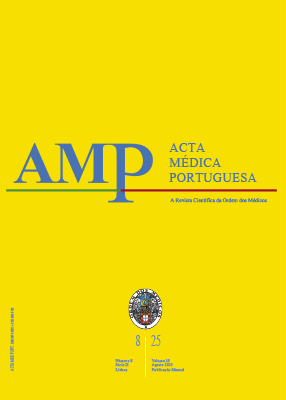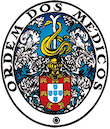Acute Aortic Dissection in the Third Trimester of Pregnancy as an Initial Presentation of Marfan Syndrome
DOI:
https://doi.org/10.20344/amp.22287Keywords:
Aortic Aneurysm, Aortic Dissection, Marfan Syndrome, Pregnancy Complications, Cardiovascular, Pregnancy Trimester, ThirdAbstract
Aortic dissection is rare and more common in men. In women, it is more frequent during pregnancy, especially in the third trimester. We present the case of a 30-year-old pregnant woman diagnosed with type B aortic dissection at 29 weeks of gestation. Following the diagnosis, fetal maturation was initiated, and the patient was transferred to a tertiary care center. Due to uncontrolled hypertension and persistent pain, and after evaluating the maternal and fetal risk-benefit, a cesarean section was performed at 29 weeks and six days. During the postoperative period, a multi-drug regimen was required for blood pressure control, but the patient recovered and was discharged. Genetic testing, prompted by a family history of sudden death (brother) and aortic dissection (father), identified a mutation in the FBN1 gene, confirming Marfan syndrome. This case highlights the importance of comprehensive patient history, the challenges of aortic dissection during pregnancy, and the need for a multidisciplinary approach in these cases.
Downloads
References
Bossone E, Carbone A, Eagle KA. Gender differences in acute aortic dissection. J Pers Med. 2022;12:1148. DOI: https://doi.org/10.3390/jpm12071148
Yuan S. Aortic dissection during pregnancy: a difficult clinical scenario. Clin Cardiol. 2013;36:576-584. DOI: https://doi.org/10.1002/clc.22165
Meng X, Han J, Wang L, Wu Q. Aortic dissection during pregnancy and postpartum. J Card Surg. 2021;36:2510-7. DOI: https://doi.org/10.1111/jocs.15575
Russo M, Boehler-Tatman M, Albright C, David C, Kennedy L, Roberts AW, et al. Aortic dissection in pregnancy and the postpartum period. Semin Vasc Surg. 2022;35:60-8. DOI: https://doi.org/10.1053/j.semvascsurg.2022.02.010
Rimmer L, Heyward-Chaplin J, South M, Gouda M, Bashir M. Acute aortic dissection during pregnancy: trials and tribulations. J Card Surg. 2021;36:1799-805. DOI: https://doi.org/10.1111/jocs.15068
Mazzolai L, Teixido-Tura G, Lanzi S, Boc V, Bossone E, Brodmann M, et al. 2024 ESC guidelines for the management of peripheral arterial and aortic diseases. Eur Heart J. 2024;45:3538-700. DOI: https://doi.org/10.1093/eurheartj/ehae179
McNally E. Aortic dissection with pregnancy—anticipating prepartum and postpartum risk. JAMA Cardiol. 2021;6:66-7. DOI: https://doi.org/10.1001/jamacardio.2020.4884
Regitz-Zagrosek V, Roos-Hesselink JW, Bauersachs J, Blomström-Lundqvist C, Cífková R, De Bonis M, et al. 2018 ESC Guidelines for the management of cardiovascular diseases during pregnancy. Eur Heart J. 2018;39:3165-241. DOI: https://doi.org/10.1093/eurheartj/ehy478
Smith K, Gros B. Pregnancy-related acute aortic dissection in Marfan syndrome: a review of the literature. Congenit Heart Dis. 2017;12:251-60. DOI: https://doi.org/10.1111/chd.12465
Kano HD, Sun W. Risk factors for aortic dissection. US Cardiol. 2023;17:e17. DOI: https://doi.org/10.15420/usc.2022.36
Rogers AM, Hermann LK, Booher AM, Nienaber CA, Williams DM, Kazerooni EA, et al. Sensitivity of the aortic dissection detection risk score, a novel guideline-based tool for identification of acute aortic dissection at initial presentation. Circulation. 2011;123:2213-8. DOI: https://doi.org/10.1161/CIRCULATIONAHA.110.988568
Czerny M, Grabenwöger M, Berger T, Aboyans V, Della Corte A, Chen EP, et al. EACTS/STS guidelines for diagnosing and treating acute and chronic syndromes of the aortic organ. Ann Thorac Surg. 2024;118:5-115. DOI: https://doi.org/10.1016/j.athoracsur.2024.01.021
Committee Opinion No. 723: guidelines for diagnostic imaging during pregnancy and lactation. Obstet Gynecol. 2017;130:e210-6. DOI: https://doi.org/10.1097/AOG.0000000000002355
Gersony DR, McClaughlin MA, Jin Z, Gersony WM. The effect of beta-blocker therapy on clinical outcome in patients with Marfan’s syndrome: a metaanalysis. Int J Cardiol. 2007;114:303-8. DOI: https://doi.org/10.1016/j.ijcard.2005.11.116
Roberts EA, Pistner A, Osobamiro O, Banning S, Shalhub S, Albright C, et al. Beta-blocker use during pregnancy correlates with less aortic root dilatation in patients with Marfan’s syndrome. Aorta. 2023;11:63-70. DOI: https://doi.org/10.1055/a-2072-0469
Guimarães T, Magalhães A, Veiga A, Fiuza M, Ávila W, Pinto FJ. Cardiopatia e gravidez – o estado da arte. Rev Port Cardiol. 2019;38:373-83. DOI: https://doi.org/10.1016/j.repc.2018.05.013
Sibai BM. Etiology and management of postpartum hypertension-preeclampsia. Am J Obstet Gynecol. 2012;206:470-5. DOI: https://doi.org/10.1016/j.ajog.2011.09.002
Downloads
Published
How to Cite
Issue
Section
License
Copyright (c) 2025 Acta Médica Portuguesa

This work is licensed under a Creative Commons Attribution-NonCommercial 4.0 International License.
All the articles published in the AMP are open access and comply with the requirements of funding agencies or academic institutions. The AMP is governed by the terms of the Creative Commons ‘Attribution – Non-Commercial Use - (CC-BY-NC)’ license, regarding the use by third parties.
It is the author’s responsibility to obtain approval for the reproduction of figures, tables, etc. from other publications.
Upon acceptance of an article for publication, the authors will be asked to complete the ICMJE “Copyright Liability and Copyright Sharing Statement “(http://www.actamedicaportuguesa.com/info/AMP-NormasPublicacao.pdf) and the “Declaration of Potential Conflicts of Interest” (http:// www.icmje.org/conflicts-of-interest). An e-mail will be sent to the corresponding author to acknowledge receipt of the manuscript.
After publication, the authors are authorised to make their articles available in repositories of their institutions of origin, as long as they always mention where they were published and according to the Creative Commons license.









